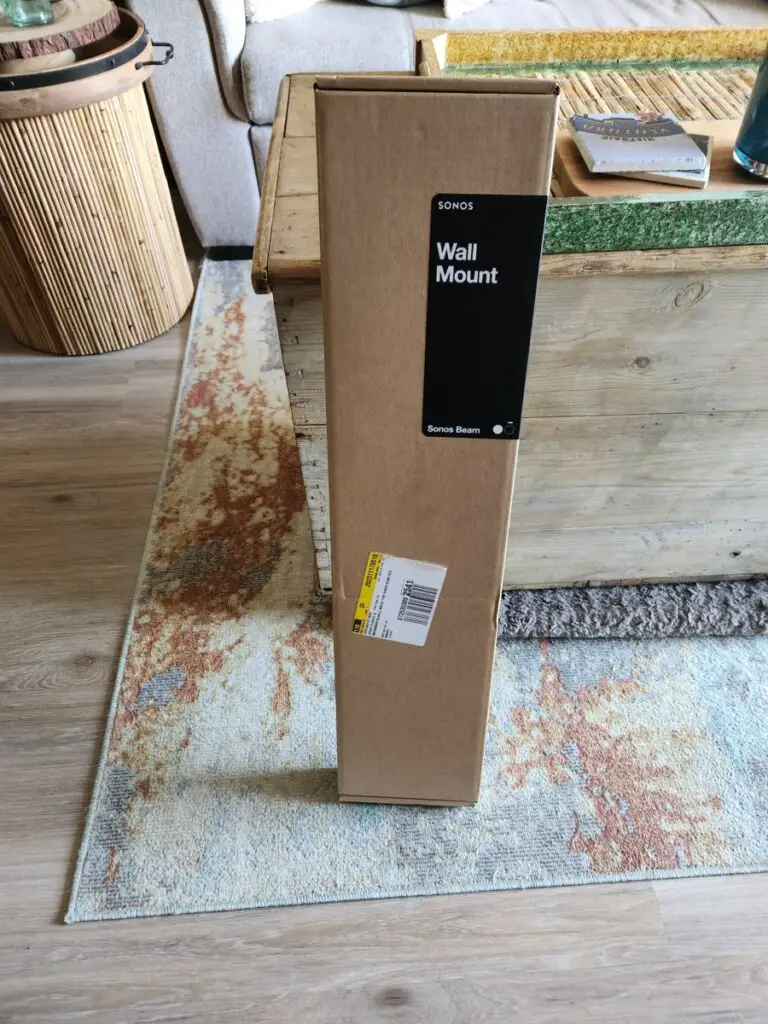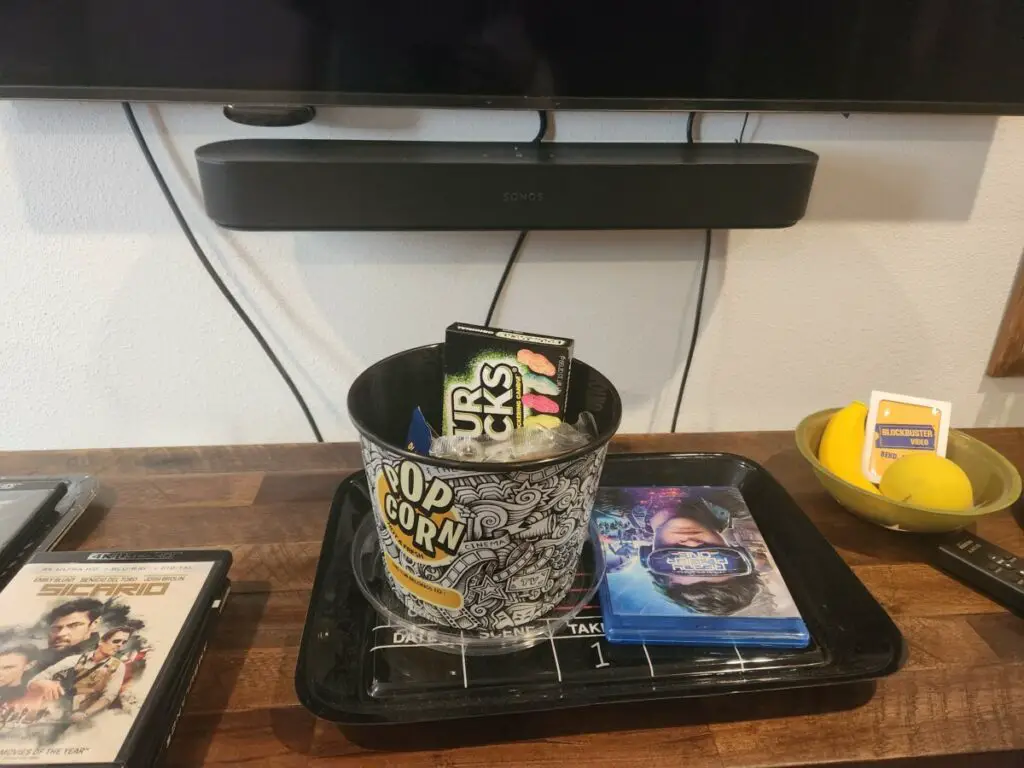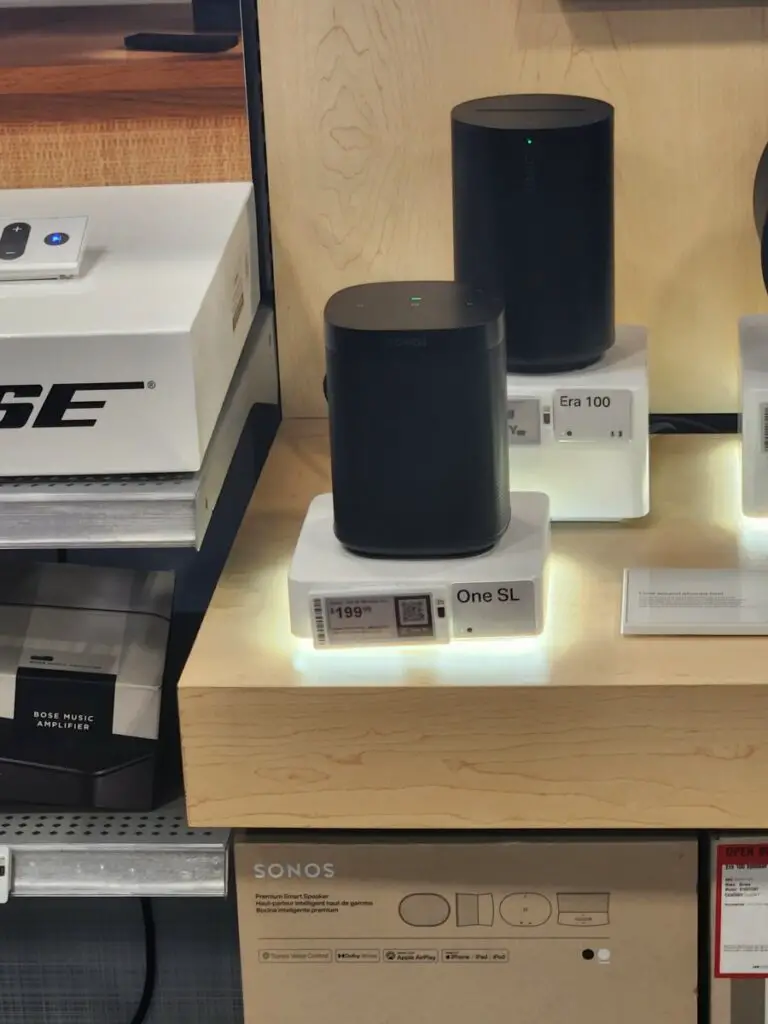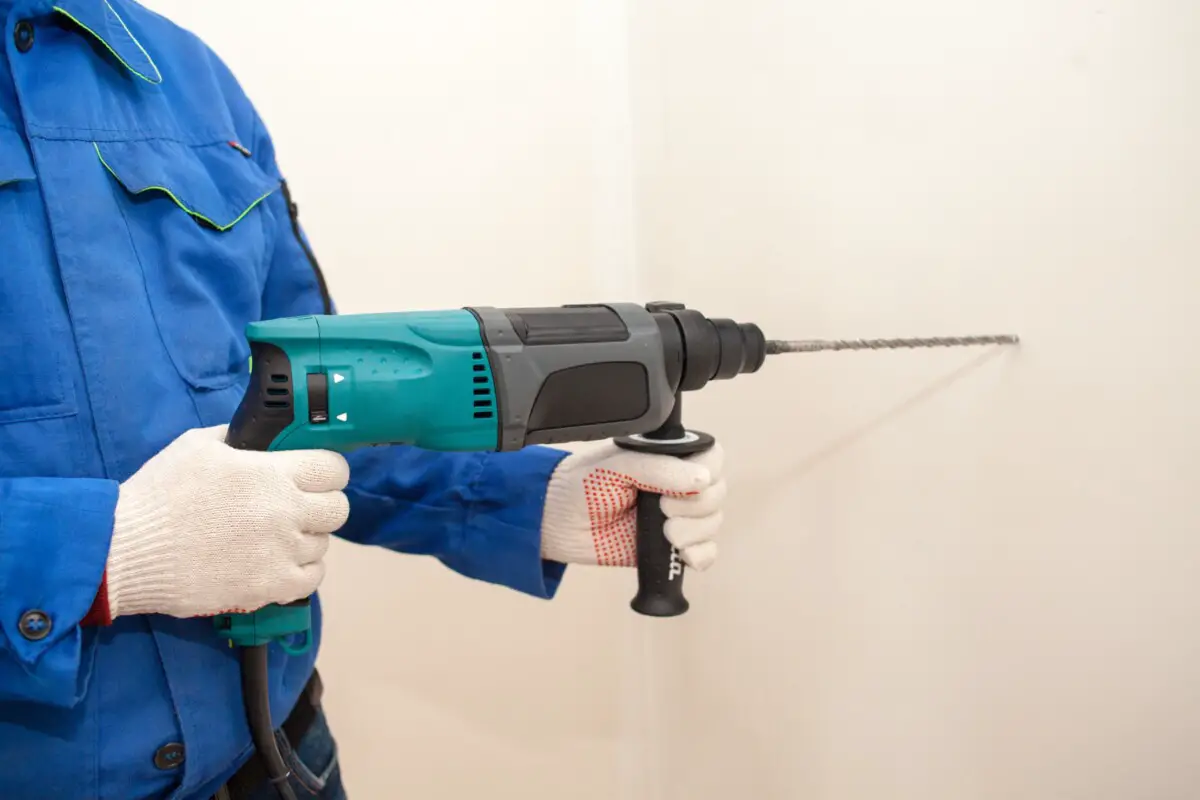As an Amazon Associate I earn from qualifying purchases
Mounting a soundbar on the wall can be a great way to improve your home theater experience.
However, you may be hesitant to mount a soundbar on your wall if you don’t want to drill holes.
The good news is that there are ways to mount a soundbar without drilling.
The best way to mount a soundbar without drilling is to use a no-stud soundbar hanger (affiliate link). These hangers are a great tool you can use around your home without needing to damage your walls.
I will go more in-depth regarding this excellent way to mount a soundbar without drilling in the sections below.
Can You Mount a Soundbar Without Drilling?

If you’re renting a home or apartment, or simply don’t want to drill holes in your walls, you no doubt want to find a way to mount a soundbar without drilling.
Luckily there are ways to do this available.
The best way is to use a no-drill soundbar bracket.
There are so many available and most of them have the weight capacity to hold soundbars on the mount as well as the proper dimensions so the soundbar fits nice and snug on the mount.
Several brands offer no drill soundbar mounts, but the one I recommend is the Hangman (affiliate link). You will have to use nails to hang this on a wall but they show virtually no damage, and most importantly do not require any drilling.
- Works with most soundbars up to 4.2 in. deep and 16 in. long and up
- Holds up to 50 lbs.
- 10 minute installation
- No drills, no anchors, and no damage
- Made of aircraft-grade aluminum
Just make sure to look up your soundbar dimensions and weight to verify it will fit on this hanger.
Also, figure out what type of wall surface you have and if it compatible with the hanger. I will go more into detail on this below.
Preparation and Safety Considerations
Before mounting a soundbar on your wall, there are a few things you need to consider to ensure a safe and secure installation.
In this section, we will discuss how to assess wall surfaces and determine the weight of your soundbar.
Assessing Wall Surfaces

The first step in mounting a soundbar without drilling is to assess the surface of your wall.
It is important to ensure that the surface is strong enough to support the weight of your soundbar.
Drywall works best if you are not drilling, concrete likely will not work at all, also plaster walls could be a major hassle.
If the wall surface is weak, it may not be able to hold the weight of the soundbar, and it could fall off, causing damage to your soundbar and potentially injuring someone.
To assess the strength of your wall, you can use a stud finder (affiliate link) to locate the studs behind the wall.
Studs are the vertical wooden beams that support the wall.
Determining Soundbar Weight
The weight of your soundbar is another important consideration when mounting it on the wall.
You should check the weight of your soundbar and compare it to the weight limit of the wall anchors you plan to use.
If your soundbar is too heavy for the wall anchors, it could fall off the wall and cause damage.
However, the soundbar hanger I recommended should be able to work with even the heaviest of soundbars as it has a 50-pound weight limit.
This is important as the size of your soundbar correlates with sound quality, you want a hanger that will safely secure your soundbar.
Wire Management and Aesthetics

Once the soundbar is securely attached to the TV, you’ll need to manage the wires.
If you have a wireless soundbar, you won’t need to worry about this step. Otherwise, you’ll need to route the wires from the soundbar to your TV.
One option is to use cable ties or clips to secure the wires to the back of the TV.
Another option is to use a wire cover to hide the wires. Wire covers come in a variety of colors and can be painted to match your wall color.
Personally, I have not done this yet with my soundbar, I’m thinking of getting a horizontal Blu-ray shelf to cover these wires at the moment.
Optimizing Soundbar Performance Post-Mounting
After mounting your soundbar, there are a few things you can do to optimize its performance.
In this section, we’ll discuss adjusting the soundbar angle and position and enhancing your audio experience.
Adjusting Soundbar Positioning
The angle and position of your soundbar can greatly affect the audio quality.
It’s important to ensure that the soundbar is positioned at ear level for optimal sound quality.
If the soundbar is mounted too high or too low, it can cause the audio to sound muffled or distorted.
Adding speakers

To further enhance your home theater experience, you may want to consider adding surround speakers.
This will provide a more immersive audio experience and allow you to hear sound effects and dialogue from all directions.
I wrote an article about why rear speakers are great to pair with a soundbar if you are interested.
A soundbar will try to mimmick surround effects but getting dedicated speakers is by far the better experience. you can get wireless bookshelf speakers that are small and compact.
Sonos in particular is a brand that excels at pairing its soundbars with high-quality surround speakers.
You can also consider getting a subwoofer as soundbars don’t have great bass.
If you’re using the soundbar as a standalone audio system, you can still enhance your audio experience by adjusting the sound settings.
Most soundbars come with different sound modes that you can choose from, such as movie mode or music mode.
You can also adjust the EQ settings to personalize the sound to your liking.
Conclusion
In conclusion, wall mounting a soundbar can significantly enhance your home theater experience, offering improved sound quality and a more immersive atmosphere.
If you’re hesitant about drilling holes, the use of a no-stud soundbar hanger provides a convenient solution without compromising your walls.
The Hangman soundbar hanger, in particular, is a recommended choice that minimizes damage and eliminates the need for drilling.
Before proceeding, it’s crucial to assess your wall surface strength and confirm the compatibility of the hanger.
Additionally, considering the weight of your soundbar and employing proper wire management techniques contribute to a safe and aesthetically pleasing installation.
Once your soundbar is mounted, optimizing its performance through careful positioning, adding surround speakers, or incorporating a subwoofer can further elevate your audio experience.
Whether you’re a renter or simply prefer a drill-free approach, these steps ensure a seamless integration of your soundbar into your home entertainment setup, allowing you to enjoy a cinema-like experience without the hassle of wall damage.
Frequently asked questions
Can drywall hold a soundbar?
Yes, drywall can hold a soundbar, but it’s crucial to assess the strength of the drywall and use appropriate mounting methods. The use of a no-stud soundbar hanger, as mentioned earlier, can distribute the weight evenly and is designed to work well with drywall without the need for drilling.
How far below my TV should I mount my soundbar?
The ideal placement of a soundbar below your TV depends on your eye and ear level. For optimal sound quality, position the soundbar at ear level when seated. Typically, this means mounting it so that the center of the soundbar is aligned with your ear level when you’re in your usual seating position.
Can you mount any soundbar?
While many soundbars are designed for wall mounting, it’s important to consider the specific mounting requirements and compatibility of each soundbar. Pay attention to the weight and dimensions of your soundbar, and ensure that the chosen mounting solution, such as the recommended no-drill soundbar hanger, is suitable for your soundbar model. Always check the manufacturer’s guidelines and recommendations before attempting to mount any soundbar.



